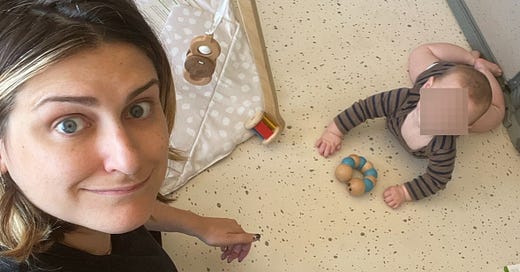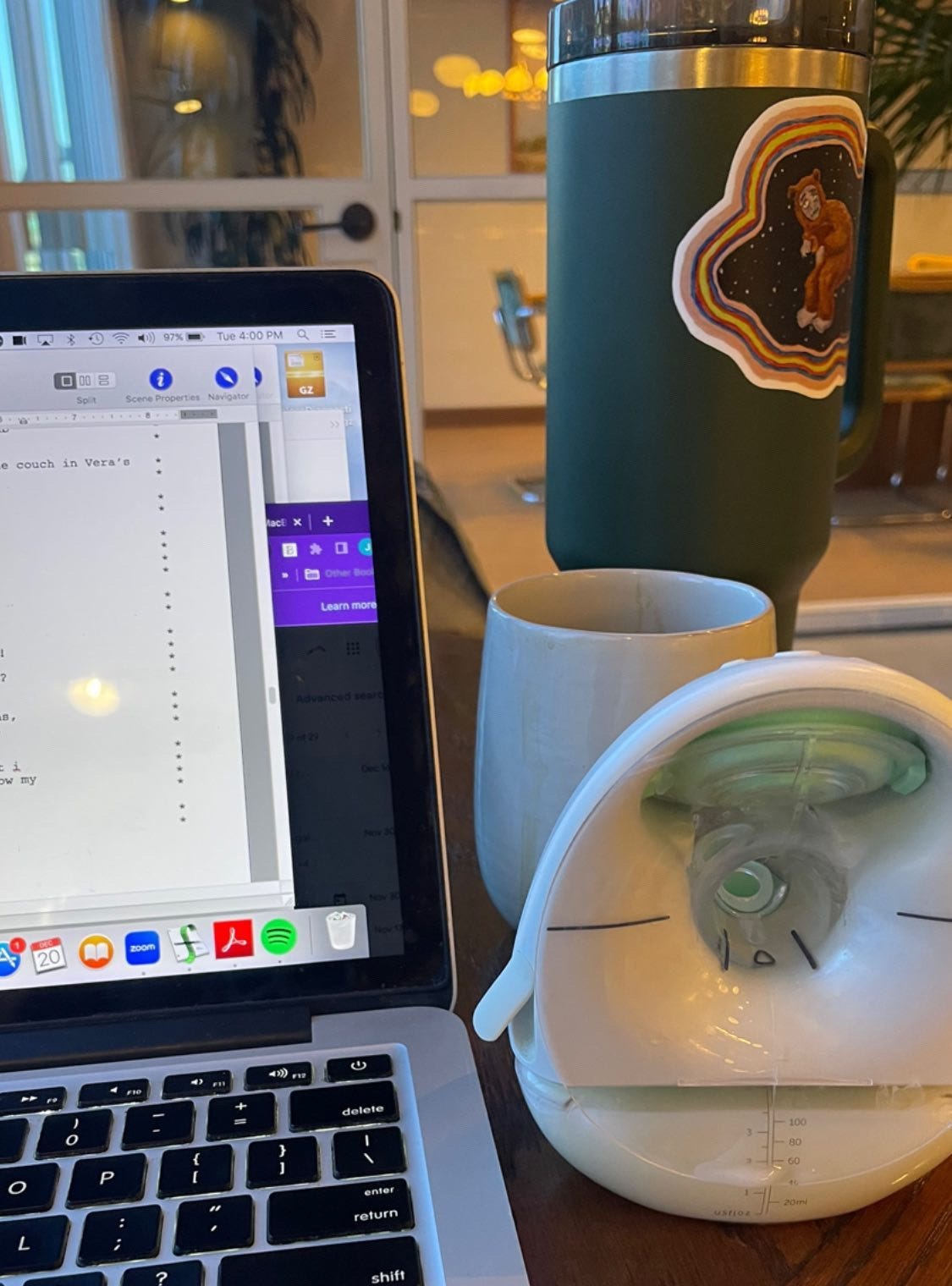Parenting While Creative / Yes Area
Attachment- and matrescence-informed parenting tips, writing tips, and how they interact
Welcome to Parenting While Creative!
I have been hemming and hawing over exactly how to craft this first Substack post - so I will model1 something I teach my writing students and clients - don’t get stuck. So away we go! In each issue of this newsletter I will share an attachment- and matrescence-informed parenting tip from my parenting coaching practice; and show how you can apply it to your writing or other creative practice. More to come on how I arrived at this point, but for now, let’s just get started!
Here’s your first Parenting While Creative tip: a “Yes Area.”
What is a Yes Area?
A “Yes Area” - aka “baby jail” aka playpen or fully baby-proofed room - is a space where your baby can do whatever they want and you don’t have to redirect or correct their behavior for their safety. No toys that fit in the mouth, nothing sharp or breakable, nothing climbable, etc.
What is the purpose of a Yes Area?
A Yes Area allows your child to safely play, explore, and be without constant intervention from you. This creates freedom and ease for your child, and for you: you do not have to put constant effort into surveilling and keeping your child safe - you did it already by creating the Yes Area, and now that task is removed from your mental load. A Yes Area is a physical embodiment of a concept I love: boundaries create flow2. The boundaries of the Yes Area allow flow for your child inside of it, and ease for you while they’re in it.
How do I apply this to writing?
I wonder if you can make a Yes Area for your writing practice. What can you do to create some boundaries for yourself beforehand that relieve you of the burden of constantly correcting and redirecting yourself while you work?
Some that I have used:
A coworking space. At the coworking space, I was relieved of the constant inner chatter about domestic tasks that I could be doing instead of writing.
A detailed schedule and plan for my writing. Lots more to say on this one, but “this is the project/scene/specific writing task you are working on at this time” is a boundary I set beforehand that relieves me of wondering if there’s some other writing task that would be better for me to be doing right now…
Some ways my clients have created “yes areas” for themselves:
turn off the internet
delete your most time-sucky apps from your phone
go to a coffee shop with only a burner flip phone that only your childcare/coparent has the info for
ask your most fun friends not to invite you to do things while you’re on a deadline
Any of these measures involve putting effort into setting a boundary beforehand, so that you don’t need to spend mental energy constantly enforcing that boundary while you’re working.
So tell me in the comments - 1) what boundaries do you need in place to create flow in your creative practice? 2) how can you create a “yes area” to enforce those boundaries for you?
What’s next?
Well folks, that was the first installment of Parenting While Creative. Every Wednesday, paid subscribers will get another tip just like it that can be applied to both parenting and your creative work. (I will also do monthly flash sales on my one-on-one coaching and other classes and content for paid subscribers.) You also get to connect with other creative parents in the comments.
Free subscribers will get posts on parenting and writing in some other cadence TBD!
My intention is to create a space I wish I had as a new parent on a deadline - a place to troubleshoot and problem-solve, but also, to have both of these parts of my identity witnessed and honored. So many thanks in advance for being a part of Parenting While Creative :)
Modeling is one of my favorite parenting concepts. Basically it’s that your children learn how to behave and think from watching you. Instead of verbally explaining and teaching your expectations and values to your children, simply visibly live them yourself. (Simply. Lol.)
I could yammer on about boundaries for a very long time, and probably will at some point in this newsletter. For now - just know that boundaries need to be based on values. It is empowering to hold a values-based boundary. It is stressful and confusing to attempt to hold an arbitrary boundary. In this example, the value behind the boundary established by the yes area is safety.






